Induction cooking has a reputation for being easier, more efficient, and quicker than other cooking methods. Yet only about 1% of American households have an induction cooktop in the kitchen, according to the Association of Home Appliance Manufacturers.
Is this lack of popularity a reflection of how well induction cooktops actually work? Or simply a sign that the benefits of induction cooking are a well-guarded secret?
Hint: it’s the second one, and we’re about to blow that secret wide open!
In this article, we’ll look at the all-too-common questions of “what is induction cooking” and “how does induction cooking work.” We’ll also take an in-depth look at how safe induction cooking is, the pros and cons of this method, and how it compares to more popular cooktop types.
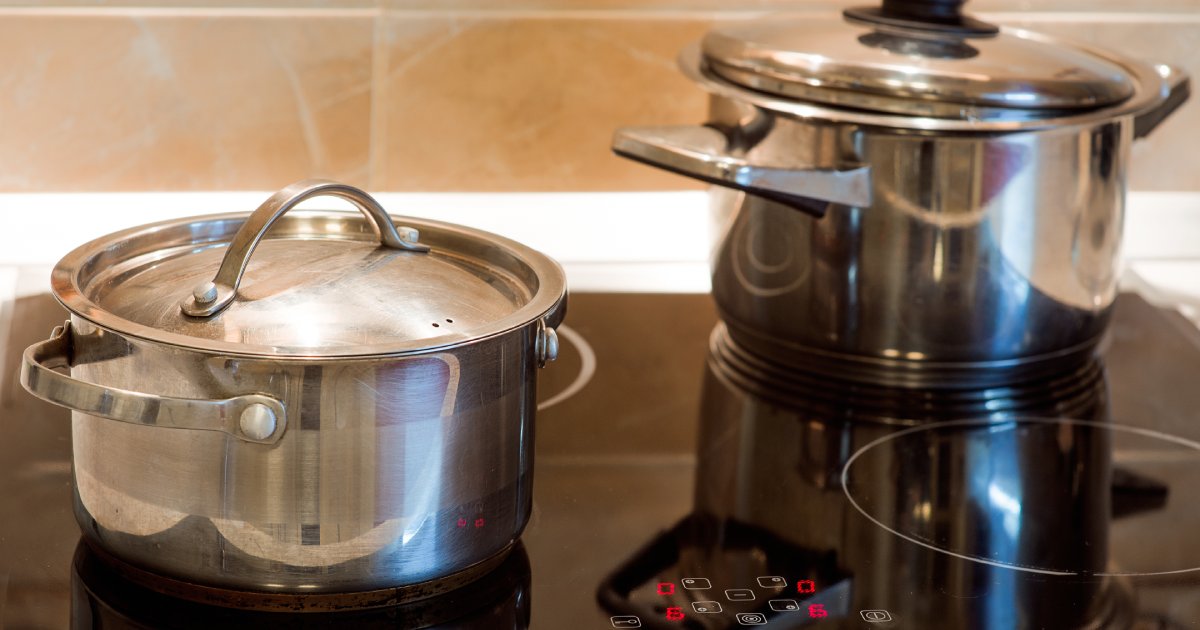
What is Induction Cooking?
Induction cooking uses oscillating magnetic fields to create magnetic flux on metal cookware to induce heating.
Unlike thermal conduction, which is what traditional electric ranges and gas stovetops use, induction cooking relies on the principles of electrical induction (also called electromagnetic induction). The energy used by these devices is not converted into heat. Rather, it is used to create a magnetic field that acts on any ferrous (magnetic) metals touching the active burner surface.
Induction cooking relies on the interaction of the cooktop surface and the pans to create heat.
How Does Induction Cooking Work?
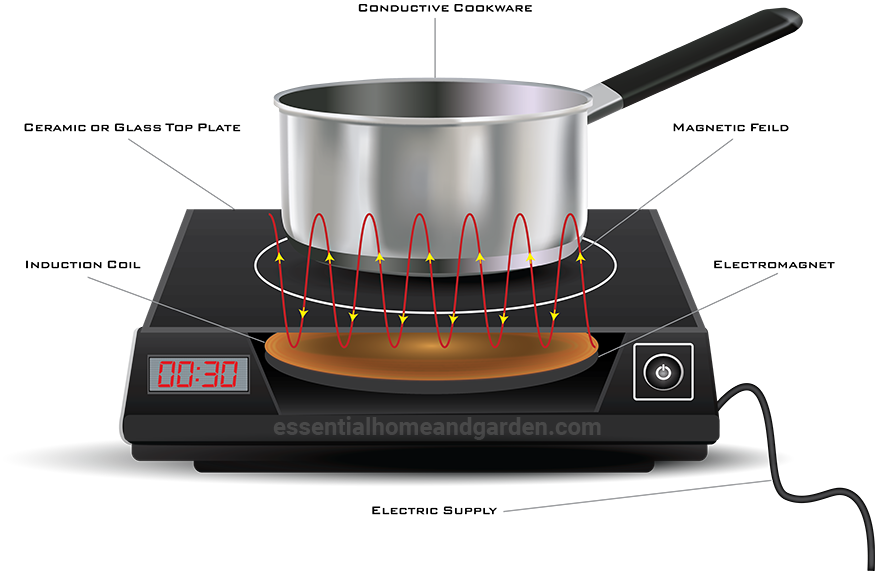
An induction burner consists of a coil of copper wire that sits just below the ceramic-glass surface of the cooktop. When electricity is forced through that coil, it creates an electromagnetic field that acts on any ferrous (magnetic) metal pan placed on top of the burner.
Creating heat using induction relies on a three-step process.
Step 1: Electricity Flows Through a Coil of Wire
Turning your induction burner on allows electricity to flow through the coil of copper wire (induction coil) just below the surface. This circular flow of electricity creates a magnetic field.
The speed of this electrical current, and the strength of the magnetic field it creates, can be controlled via the control panel on your cooktop — the control panel works the same way as a standard burner’s temperature dials.
Step 2: An Eddy Current Is Created In the Cookware
The electric current flowing through the copper wire acts as a transformer. When you place a ferrous (magnetic) pot or pan on top of that coil, an eddy current forms inside the cookware.
These loops of electrical current flow through the metal of the pan. The resistance to this movement is what causes the metal to heat up. This heat and current flow throughout the pan, causing the entire pan to heat up at a uniform rate rather than the heat being concentrated around the burner as it would be with a traditional cooktop.
Step 3: Changing Current Speed
Increasing the electric current in the copper coil causes the associated pan to heat up more. Reducing the electrical current reduces the pull of the magnetic field, which, in turn, causes the pan to cool down.
Once the current is turned off or the pan is removed from the source, it very quickly returns to an inactive state and cools down to room temperature. Because no heat is created within the stovetop itself, the burner area also returns to room temperature as soon as the residual heat from the pan’s surface dissipates.
Is Induction Cooking Safe?
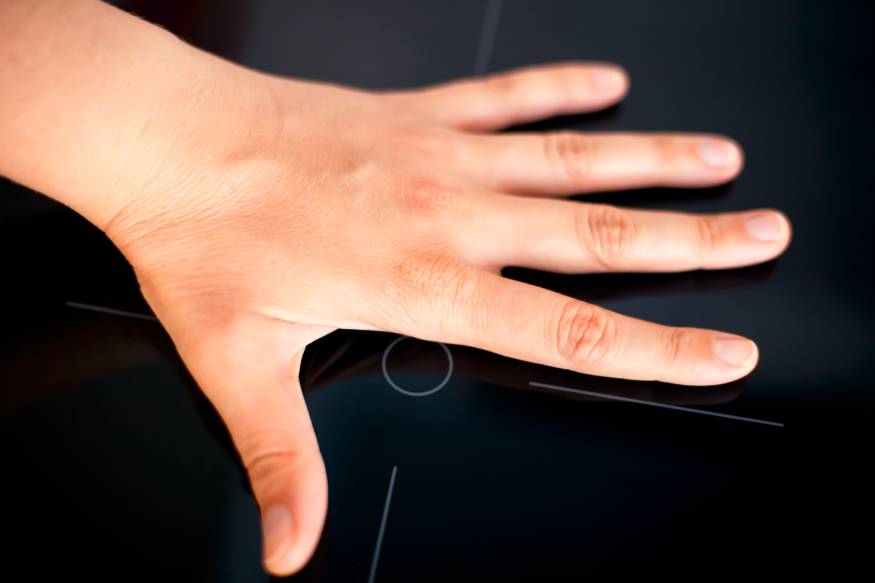
Induction cooking is very safe since the cooktop itself does not produce heat. Many studies have also confirmed that the electromagnetic field created by these cooktops has no adverse effects on health.
Info: Induction cookers generate heat within the cookware, not on the burner surface.
When the cooktop is turned off, any residual heat dissipates quickly when the pot or pan is removed from the burner area. Non-metal items like towels, napkins, and even skin that contact the cooktop’s surface while it is turned on will not burn or get hot.
This makes induction cooking hobs much less likely to cause a fire or accidental burns. They make an excellent choice for households with children and pets that like to counter surf.
Some people worry about the health effects of induction cooking not because of fire or burn potential but because these appliances create electromagnetic fields (EMF). To date, scientific research has yet to find a link between exposure to low-to-mid-frequency EMF and higher cancer rates or any other health condition.
Note: The only people who should be a little concerned about induction hobs are people with pacemakers.
Certain electromagnetic fields have been found to interfere with pacemaker operation. Because of this potential but unlikely interaction, the British Heart Foundation recommends pacemaker wearers to keep a minimum distance of 2 feet from induction cookers while in use.
But for the average person, induction cookers are extremely safe.
When used correctly, they’re less likely to cause fire or burns than traditional ranges and no more dangerous to overall health than your refrigerator, vacuum, wifi router, or any other low-to-mid-Frequency EMF device found in your home.
The Advantages and Disadvantages of Induction Cooking
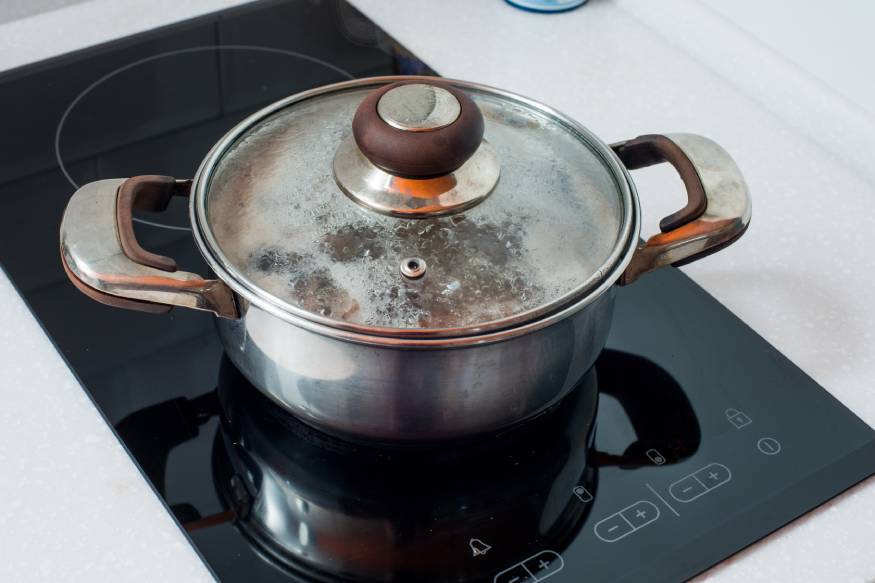
Safety concerns aside, there are some other considerations worth considering before investing in a new induction cooktop.
The advantages of cooking with an induction cooker include:
- Cookware heats up faster. Traditional cooktops rely on the transfer of heat from the burner to the bottom of the pan. Once the bottom is sufficiently warmed, the heat will begin to dissipate slowly up the sides of the pan. In induction cooking, the effects of the magnetic field immediately influence the magnetic properties of the entire pan, allowing the whole thing to heat up faster and more evenly.
- Food cooks faster. Because pots and pans heat up more quickly on induction stovetops, the food inside them also cooks faster. A pot of water, for instance, will boil 50% faster on an induction cooker compared to a traditional hob.
- Cookware cools down quicker. The same principles that allow induction cookers to heat pans quicker also allow pans to cool faster when the temperature is reduced. This quick responsiveness makes it less likely to burn or boil over food while making it easier to find the perfect temperature for every recipe.
- Induction uses less energy. The amount of energy needed to run a traditional range compared to the amount of energy that is actually converted into heat is about 74%. But with an induction cooker, this number jumps up to about 84%. That means each meal you cook on an induction hob will cost you less when the utility bill comes at the end of the month.
- They’re easier to keep clean. Because the surface of an induction cooker doesn’t heat up, spilled food doesn’t get burnt on. Like other glass-top ranges, these units also feature a flat, smooth surface that is much easier to wipe clean.
- Autosizing burners. Many newer induction cookers feature smart burners that automatically adjust the burner area based on the size of the pot being used. This makes it easier to cook with multiple pans at once and reduces your energy waste by only supplying electricity to the area needed.
The disadvantages of using an induction cooktop are far fewer in number. However, depending on your needs, they may influence whether this range option is the right choice for you or not.
The disadvantages of induction cooking include:
- Only certain cookware is compatible. For the magnetic field created within the cooktop to affect the cookware on top, it must contain ferrous or magnetic material. Not all pots and pans fall into this category, limiting what you can use to cook with. We’ll take a more in-depth look at this concept below.
- Induction cooktops can be expensive. As this cooking method becomes more popular, the price of induction ranges and cooktops has come down some. But, in general, the cost of these appliances is at the higher end of the spectrum.
- The learning curve. Just as it takes time to learn how to cook using gas or electricity, if you don’t have experience with these methods, it will take some time to get used to cooking with induction. Not only do these appliances cook faster and respond more quickly, but they also have a lot of unique quirks, like disappearing control panels and burners that automatically shut off when the pan is removed.
Induction vs. Gas and Electric Cooktops
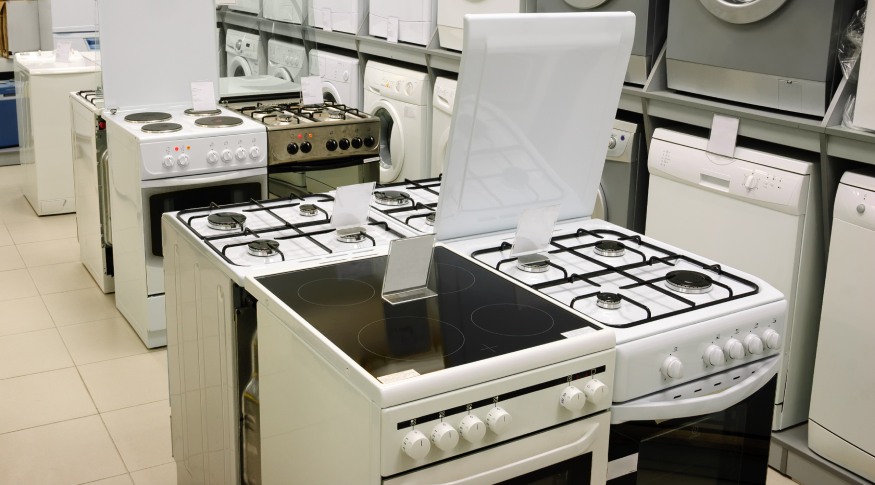
As we’ve discussed, induction cooking uses electromagnetic induction to create heat within the associated cookware. On the other hand, gas and electric cooktops rely on thermal conduction.
Thermal conduction is a concept more people are familiar with. In this type of heating, heat is transferred via the diffusion of thermal energy from one object to another. In gas appliances, the heat from the flame is transferred to the pan. On the other hand, heat in electric ranges is transferred from the heated coil.
Each of these appliances has its advantages and disadvantages, as you can see in the table below.
| Considerations | Induction | Gas | Electric |
| Energy Efficiency | Highly energy efficient. About 84% of energy is converted to heat. | Moderately energy efficient. About 74% of energy is converted to heat. | Moderately energy efficient. About 74% of energy is converted to heat. |
| Cost to Operate | Heats and cooks faster. This combined with high energy efficiency means this option costs the least to operate. | Gas is relatively cheap compared to electricity. Gas ranges cost less than electric ranges to operate. | It takes about three times as much energy to deliver electricity to a range compared to gas. Electricity is also more expensive, making this the most costly type to use. |
| Cost to Purchase | Tends to cost as much or more as high-end gas and electric ranges. | Low-end gas ranges are the cheapest type, but high-end, high-priced models also exist. | Coil burner electric ranges are cheaper, while ceramic-glass top models span the mid to high price tiers. |
| Compatible Cookware | Most stainless steel and stainless clad, carbon steel, cast iron. | All | All |
| Cooking Advantages | Highly responsive, quick to heat, quick to cool. | Instant response when raising or lowering the heat or temperature is easy to control. | Easier to turn on than gas, flatter cooking surface, food will stay warm if left on the burner after it is turned off. |
| Safety | Do not get hot, so they are unlikely to cause burns or fire. | Open flame increases the chances of fire and burns. Introduces fossil fuel pollutants into the home. (see below for more details) | Surfaces remain hot for long periods, increasing the chances of burns. Less likely to cause fire, but there’s still a chance. |
| Cleaning | Very easy to keep clean as the surface is smooth and food does not tend to get cooked on. | Difficult to clean due to raised burners and inset areas under burners. | Standard coil burner units are challenging to clean due to raised burners. Ceramic-glass tops are easier to clean but prone to burnt-on food. |
Further to the information in the table above, In fact, when comparing induction to a gas cooktop, they have a few distinct safety benefits:
- No fossil fuel pollution introduced to the home (gas stoves produce dangerous levels of NO2, CO and particulate matter)
- The above pollutants are known to increase the risk of respiratory illness and neurological degradation, and can exacerbate cardiovascular issues
- Children are more susceptible to these polutants than adults
What Pots and Pans Do I Need for Induction Cooking?
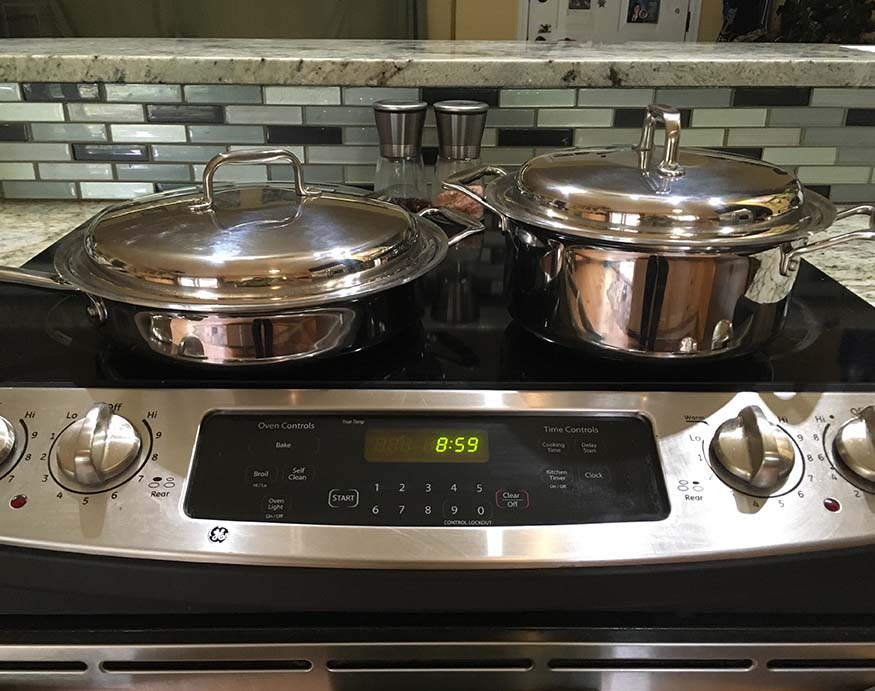
Only certain types of cookware are compatible with use on an induction cooker. And some compatible types work better than others. Before you buy a new induction cooker, take some time to make sure your current cookware will work on your new stovetop.
Cookware types that work with induction cookers include:
- Low nickel/high magnetic stainless steel, including stainless clad and multi-ply stainless options. Pans made of or clad with low nickel stainless steel are reactive with induction cooktops. Those with copper or aluminum cores will hold heat longer than simple stainless cookware.
- Carbon steel is naturally magnetic and reacts well with induction cookers.
- Magnetic bottom cookware is typically made of anodized aluminum or ceramic but include a special coil or bottom plate made of magnetic steel that makes them compatible with induction cooktops. However, these types will not react as quickly to temperature changes as the kinds listed above.
- Cast iron is highly magnetic but is also very heavy, which poses a risk to the ceramic-glass surface of induction cookers. While these pans will work with induction cookers, we don’t recommend them.
Cookware types that won’t work well with induction cookers include:
- Copper. Unless it is clad in magnetic stainless steel, copper will not work on these cooktops because it has no magnetic properties.
- Aluminum. Like copper, aluminum and anodized aluminum must be clad in a magnetic material to work with induction hobs.
- Ceramic and glass. These non-metal pans will not work with induction cookers.
- High nickel/austenitic stainless steel. This type of stainless steel is only weakly magnetic and will not perform well on induction cookers despite the claims of some manufacturers.
Not sure what kind of stainless steel your pan is made of? You can easily check by sticking a magnet to the bottom. If the magnet sticks, your pan is induction compatible. If not, it’s time to go shopping!
If your cookware isn’t optimized for induction cooking, you’ll need a new set to take full advantage of all the benefits of these cookers.
The Different Types of Induction Cooktops
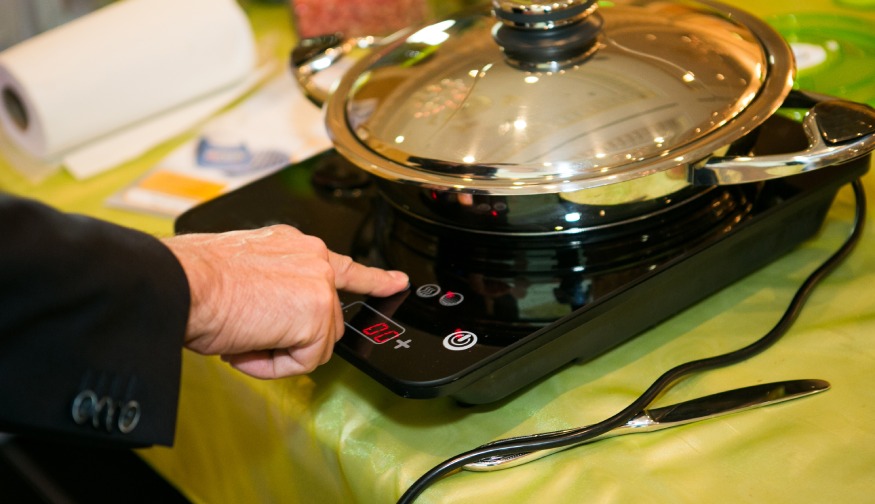
Like other types of cooktops, induction cookers come in various styles. They can be installed separately from the oven or included in the same appliance. Some have multiple burner areas, while others are smaller and made to be portable.
- Induction Ranges – These appliances include an induction cooktop over a connected convection oven. They come in standard sizes and can be used in any space outfitted with a 240-volt outlet.
- Induction Cooktops – Cooktops are meant to be installed directly into the counter. Induction units typically require a 240-volt outlet and, installation-wise, are very similar to electric cooktops.
- Induction Plates – Induction plates are identical to cooktops but only have one or two burners. Like cooktops, they are installed on the counter but often stick up higher than larger cooktops. These are great for small kitchens or chefs who need more room than their cooktop allows.
- Portable Induction Units – These are very similar to induction plates but are built to sit on top of the counter. These are great for RVs, dorm rooms, and other small spaces.
Induction Cooking is a Great Alternative To Traditional Methods
Induction cooktops are a great alternative to traditional gas and electric ranges. These units use less energy, cook more efficiently, and are safer to use. They do cost a little more and require specific cookware, but they are more than worth it for a cooktop that responds immediately to every change in temperature and cooks food in 50% less time.
If you are considering a new range or cooktop and have the budget for it, an induction hob is absolutely worth the investment.
Have more questions about how induction cooktops work or wondering if your pans are compatible? Comment below, and we’ll help you find the answer.